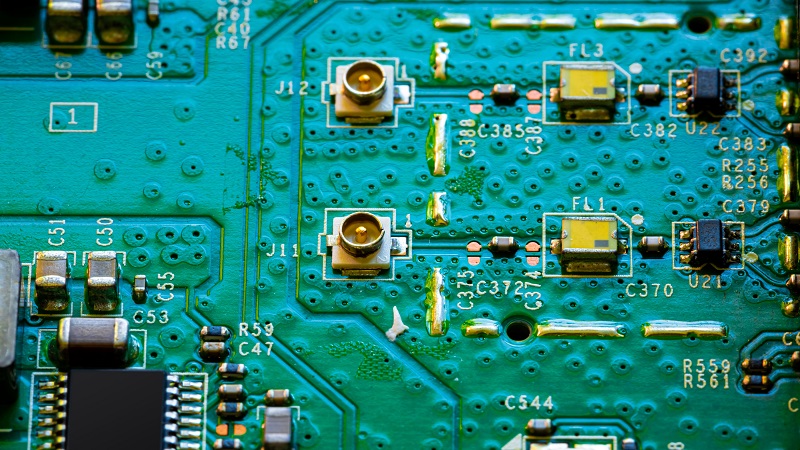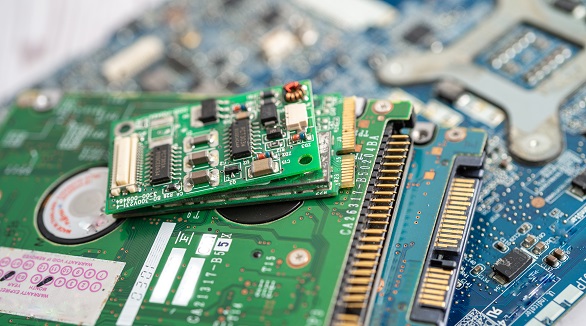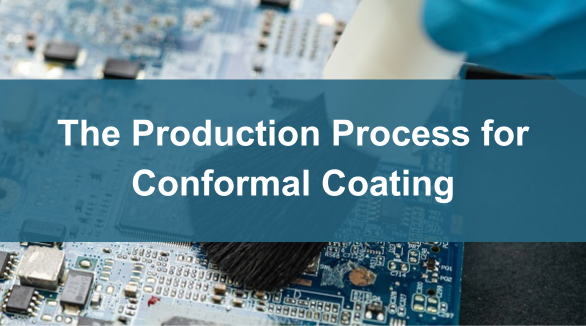What is PCB Conformal Coating?
PCB conformal coating is a thin, non-conductive film applied to circuit boards to protect them from moisture, dust, and temperature variations. Made from materials like acrylics and silicones, it provides insulation and corrosion resistance. Application methods include brushing, spraying, dipping, and vapor deposition.
Treatment and coating for protection against bad environmental conditions is a part of the manufacturing process for a PCB. One such protective treatment is the conformal coating, involving a thin, polymeric, and non-conductive film, which "conforms" to the surface of the board. The main objective of the conformal coating is to protect the PCB from moisture, dust, and temperature variations.
Definition
A conformal coating is a thin layer of protective material applied to a circuit board that acts as a barrier between pollutants and the board. It acts as an insulation layer, protecting the PCB from environmental threats while allowing the board to function normally. Coatings typically begin in liquid form and can be made from one or more components, including acrylics, polyurethanes, silicones, epoxy, or resins. They occur in either firm or rubbery textures, depending on the type, and are used for a variety of reasons.
Functions
The functions that conformal coatings have included the following:
- High Protection from Insulation: Better insulation allows for closer spacing between conductors.
- Moisture and Humidity Resistance: Protects against moisture and humidity; hence, reducing leakage currents, crosstalk, and electrochemical migration across the board.
- Corrosion Protection: Protects the board from chemical and corrosive attacks, and it protects from rough handling and thermal, and mechanical stresses.
- Dielectric Strength: The coating improves dielectric strength between conductors.
- Contaminant Barrier: Prevents particulate contaminants from reaching the surface of the board.

How to Apply Conformal Coating?
Here are a few methods to apply conformal coating:
Brushing
This application method is relatively simple and requires competent operators. The technique is dipping a brush into the coating material and subsequently onto the board. The type of brush, operator competence, coating viscosity, atmosphere, and coating material itself will all have an impact on this. This approach is utilized for low volume and rework since it is simple to set up and inexpensive.
Spray Application
The different techniques involved in spray application are aerosols, batch, and selective spraying:
- Aerosols: Coatings are typically applied with a spray gun and solvents. This procedure is less expensive, faster, and produces a higher-quality finish than brushing.
- Batch Spraying: This method uses a compressed air spray gun, which gives a fine finish, and requires an appropriate spray gun, a booth for spraying, and also an air compressor to implement. Proper atomization pressure and material feed, coupled with correct coating viscosity, are critical to this process. It is flexible for many different coatings and has relatively low initial setup costs.
- Selective Spraying: Only part of the product is coated, and areas, that have to be masked, are skipped. Variable spray patterns need the use of a specialized robotic system. Spray valves must be properly selected and configured, as well as coating viscosity.
Dipping
This is a traditional method whereby the PCBs are immersed in a tank of coating liquid. Parameters such as the speed of immersion, dwell time, and withdrawal speed of members affect this process. The most common coatings are based on solvents such as acrylics and urethanes. This is a high-speed technique suitable for batch and inline productions.
Vapor Deposition
The coating is applied to the board in gaseous form using the Parylene technique. Chemical vapor deposition has four steps: parylene vaporization, pyrolysis, coating deposition, and cold trapping. Vapor deposition is relatively expensive, but it provides good moisture and electrical protection, making it appropriate for medium and large manufacturing volumes.
Hot Tags:
Contact us

If you can't find what you're looking for, please contact us.
Article

Copper in PCBs oxidizes, causing solder defects and reducing product life. Surface coatings like HASL, OSP, ENIG, and ENEPIG prevent this, ensuring solderability and reliability. Choosing the right coating based on application needs significantly improves the quality, reliability, and lifespan of products.

The conformal coating process for PCBs involves eight steps: Cleaning, Priming, Masking, Application, De-masking and Finishing, Drying and Curing, Inspection, and choosing Coating Chemistries, ensuring optimal coating performance.

Conformal coating protects PCBs but sometimes needs removal. Local removal uses soldering, solvents, or mechanical abrasion. Full removal is more labor-intensive, involving chemical stripping or extensive mechanical abrasion.